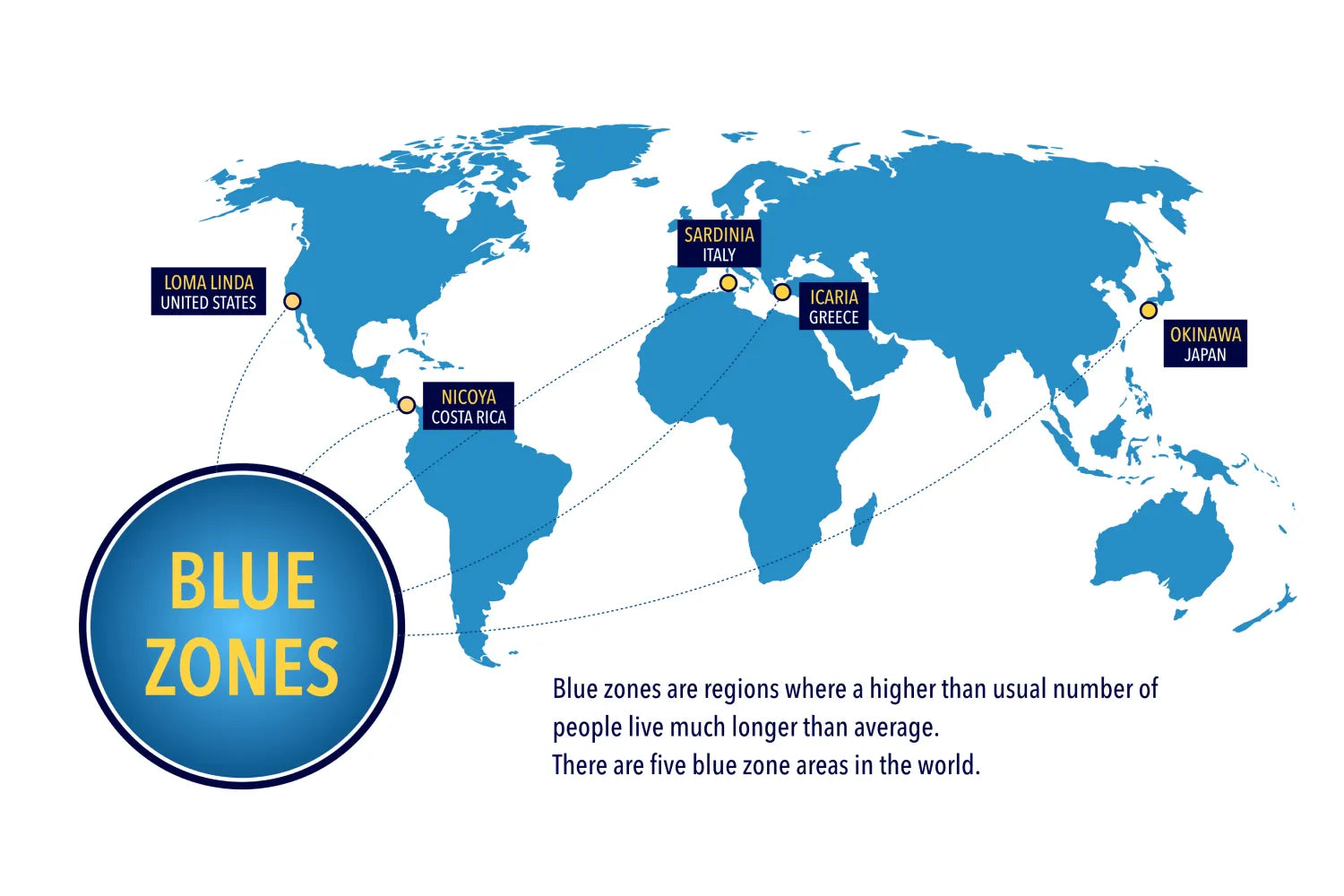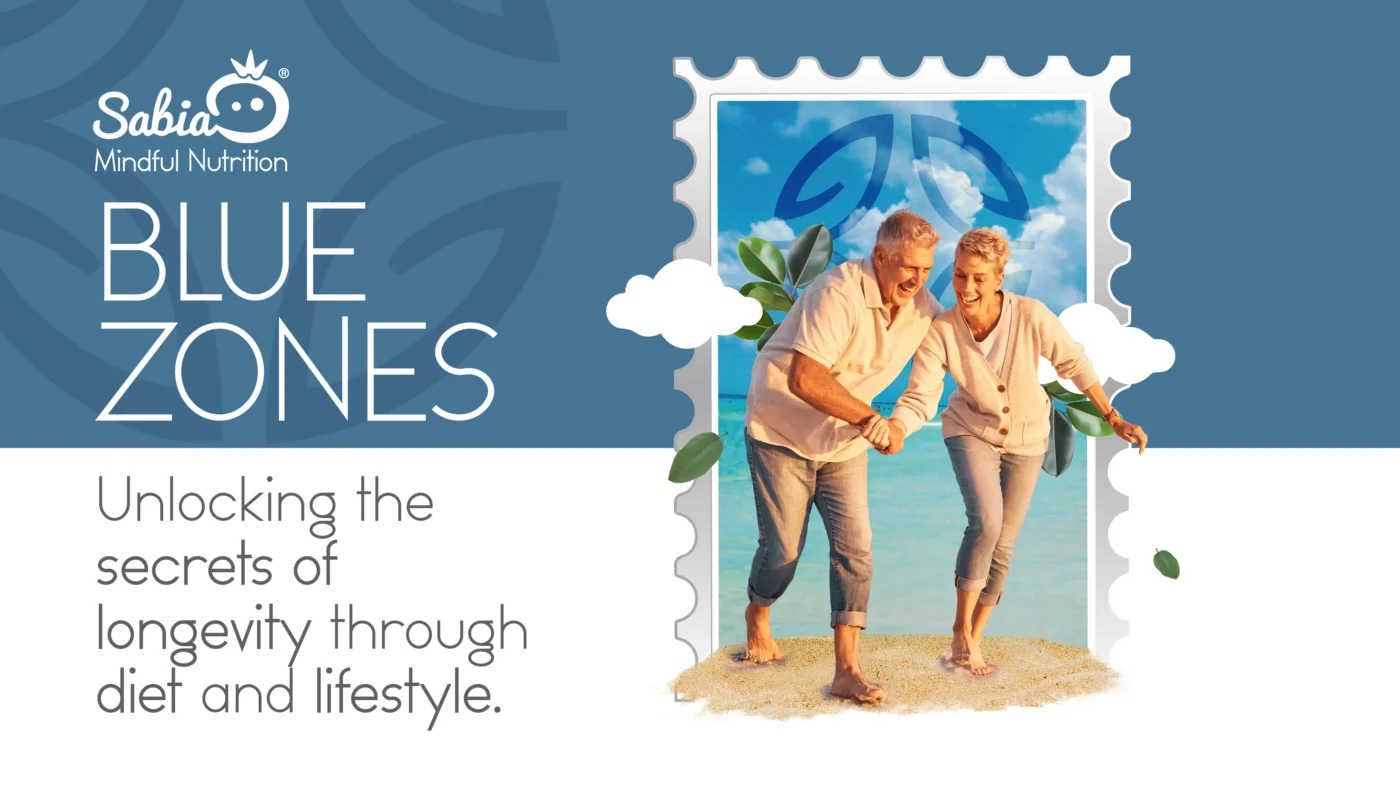Anti-aging, Health, Lifestyle, Uncategorized
Blue Zones: Unlocking the Secrets of Longevity Through Diet and Lifestyle
In a world where the pursuit of health and longevity is increasingly paramount, the concept of Blue Zones has captured the imagination of researchers, health enthusiasts, and the general public alike. But what exactly are Blue Zones, and what can they teach us about living longer, healthier lives? Let’s dive into this fascinating topic, with a special focus on the dietary habits that contribute to the exceptional longevity observed in these regions.
What Are Blue Zones?
Blue Zones are specific areas around the world where people live significantly longer than average, often reaching 100 years of age or more in good health. These regions were first identified by researchers Gianni Pes and Michel Poulain, and later extensively studied by Dan Buettner in collaboration with National Geographic.
The five original Blue Zones are:
- Okinawa, Japan
- Sardinia, Italy
- Nicoya, Costa Rica
- Ikaria, Greece
- Loma Linda, California, USA
What sets these areas apart is not just the longevity of their inhabitants, but also the quality of life they enjoy in their later years. People in Blue Zones tend to remain active, engaged in their communities, and relatively free from chronic diseases well into their golden years.

The Blue Zone Diet: Eating for Longevity
While each Blue Zone has its unique characteristics, diet plays a crucial role in all of them. Here are some common dietary patterns observed across Blue Zones:
- Plant-Based Focus: The majority of calories in Blue Zone diets come from plant sources. Vegetables, fruits, whole grains, and legumes form the foundation of most meals.
- Moderate Protein Intake: Animal protein is consumed in small amounts, often as a side dish or flavoring. Fish is more common than meat in coastal Blue Zones.
- Beans: Legumes, including fava beans, black beans, soy, and lentils, are a dietary staple in all Blue Zones.
- Nuts: A handful of nuts is consumed almost daily in most Blue Zones, providing healthy fats and proteins.
- Whole Grains: Unprocessed grains like barley, oats, and brown rice are preferred over refined grains.
- Limited Sugar: Natural sweeteners like honey are used sparingly, and processed sugars are rare.
- Moderate Alcohol Consumption: Most Blue Zone inhabitants drink alcohol in moderation, often red wine with meals.
- Water: Water is the primary beverage, with herbal teas also being popular.

Beyond Diet: Lifestyle Factors in Blue Zones
While diet is crucial, it’s not the only factor contributing to longevity in Blue Zones. Other important aspects include:
- Regular Physical Activity: Blue Zone inhabitants incorporate natural movement into their daily routines, such as gardening, walking, or manual labor.
- Sense of Purpose: Having a clear reason to wake up each morning, what the Okinawans call “ikigai,” is associated with longer life.
- Stress Reduction: Blue Zone residents have routines to shed stress, whether it’s praying, napping, or happy hour.
- Strong Social Connections: Family and community play central roles in Blue Zone societies.
- Spiritual or Religious Involvement: Most Blue Zone inhabitants belong to some faith-based community.
Implementing Blue Zone Principles in Your Life
While we can’t all move to a Blue Zone, we can adopt many of their practices:
- Eat More Plants: Aim to make plant-based foods the stars of your meals.
- Create a “Plant Slant” in Your Kitchen: Stock up on beans, whole grains, and nuts.
- Drink More Water: Replace sugary drinks with water or unsweetened teas.
- Find Your “Tribe”: Cultivate strong social connections with like-minded individuals.
- Move Naturally: Find ways to incorporate more natural movement into your day.
- Develop Stress-Reduction Techniques: Whether it’s meditation, yoga, or a hobby, find what helps you unwind.
- Find Your Purpose: Reflect on what gives your life meaning and pursue it actively.
The Science Behind Blue Zones
Numerous studies have been conducted on Blue Zone populations, seeking to understand the mechanisms behind their longevity. Research has shown that the Blue Zone lifestyle contributes to reduced inflammation, improved cardiovascular health, and potentially even beneficial changes at the genetic level.
For example, the Okinawan diet, rich in sweet potatoes, soy, and vegetables, has been linked to lower rates of cardiovascular disease and certain cancers. The Mediterranean diet, prevalent in the Ikarian and Sardinian Blue Zones, is well-known for its heart-health benefits.
The Blue Zones offer a fascinating glimpse into the potential for human longevity and health. While genetics play a role, the lifestyle factors observed in these regions – particularly the dietary habits – appear to be key in promoting long, healthy lives. By incorporating some of these principles into our own lives, we may not reach 100 years, but we can certainly improve our chances of living longer, healthier lives.
Remember, the goal isn’t just to add years to our lives, but life to our years. The Blue Zone way of living offers a roadmap to do just that, emphasizing not just healthy eating, but also the importance of community, purpose, and an active lifestyle. As we face the challenges of modern life, the wisdom of the Blue Zones may be more relevant than ever.


